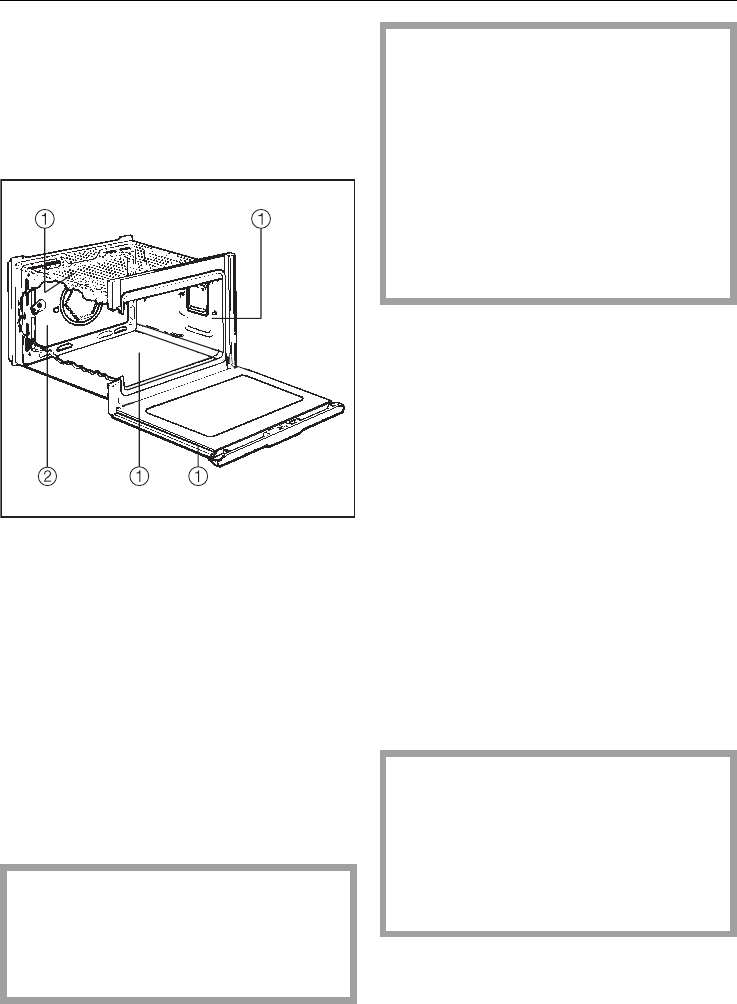
Cleaning and care
Oven interior
Different surfaces of the oven interior
are coated with either
b “Clean-Enamel”, or
c “Catalytic” enamel.
The oven cavity and door interior are
finished in “Clean-Enamel”. The rear
panel which protects the fan is more
subject to oil and fat splashes, and has
a catalytic coating.
With some models, side panels with
catalytic coating are fitted, and the re-
movable guard plate above the grill
has a catalytic coating. With this ar-
rangement most of the interior “Clean-
Enamel” is protected, except for the
floor and door, which should be
cleaned after each use.
The oven should be cleaned regu-
larly, preferably after each use.
If left too long cleaning becomes un-
necessarily difficult and in extreme
cases impossible.
Important: Remove any soiling from
the “Clean-Enamel” areas before
carrying out the extra cleaning pro-
cess for “Catalytic” enamel de-
scribed on the next page.
Never use hard brushes, wire wool
or scourers, scouring pads, hard
sponges or other scouring agents
on the enamel coatings.
These scratch and damage enamel.
b “Clean-Enamel”
This is a specially hardened enamel
with an extremely smooth surface.
Most baking and roasting residues can
be easily removed using a sponge
cloth, washing up liquid and hot water.
If something bakes on harder, it can be
loosened with a shielded razor blade
scraper. It is easier to remove splashes
of fruit or cake mixture from the oven
and racks while they are still warm.
Fruit juice may cause lasting discolour-
ation.
Dull patches may remain permanently
in the oven tray after roasting or grilling.
If an oven spray is used on the
Clean-Enamel, follow the manufac-
turer’s instructions carefully.
Important: Oven spray must not
come into contact with “Catalytic”
enamel.
42


















